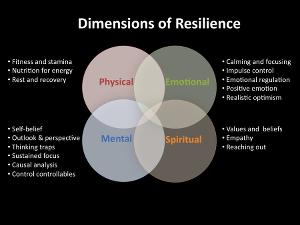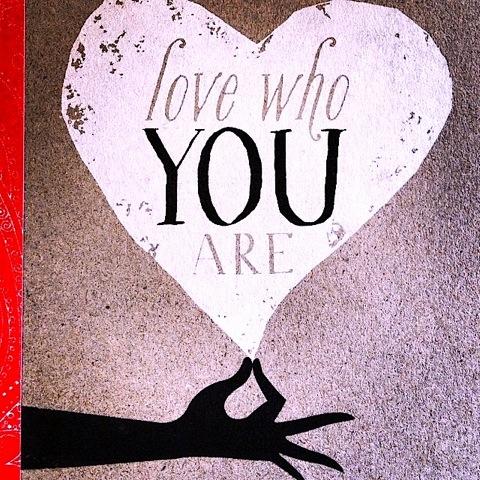The Heart of Vulnerability and Resilience
by Vidya McNeill

“The shadow self seems to be the opposite of love. Actually, it is the way to love.” Deepak Chopra
Teaching clients life skills is an important aspect of our CHEK Coaching work. We can easily get stuck during a change process and it’s not always motivating to look at the core influencing factors (fear has a way of undermining courage). However, addressing them will transform the coaching experience for the coach and the client.
As coaches, we know that change requires awareness and energy. We’re curious and want to discover and explore our client’s thinking and feeling patterns so that they are empowered throughout the process. This process brings up vulnerabilities. We need to create an environment of safety and care so that they feel safe to transform, grow and realize their full potential as whole people.
What we know matters, but who we are matters more. Why is this important? It may seem obvious, but it is the coach that creates the environment for the client to show up with all his or her imperfections, vulnerabilities and shame. If you have experienced being coached for any reason, you will know what that feels like. In our culture, we place a great deal of energy on hiding our imperfections. We know this by our shadows others can see, but we try to conceal them.

Image from PreventDisease.com
I see this as an epidemic where we quickly become triggered, then do our best to defend against feeling vulnerable. It is precisely because of those uncomfortable feelings that we must become curious and lean toward them as they have everything to do with the courage to create transformational change and become resilient.
We all want people in our lives with whom we can be real. People we can trust with our hearts and our struggles. People to whom we can risk opening up. Whether we are the coach or the client, the cultivation of resilience is none other than the process of healthy human development – a dynamic process in which individuality and environmental influences interact through in a reciprocal, engaged, connected relationship.
Entering into the client’s world, so that we may understand their perspective, fears, feelings and beliefs, requires that we suspend our own judgments about them, even if we “know” what has contributed to the breakdown of their health. Vulnerability is at the heart of the feedback process and will open the path toward experiencing more love and a genuine sense of belonging in our lives.
I know that I’m a recovering perfectionist. I can see that my own deceptive mask had its roots in scarcity and the fear of not being smart enough, skilled enough or good enough. Those feelings really drove me as a younger woman toward achievement and expertise while hiding the fear that if anyone would find out who I really was, they would see that I was a fraud and wouldn’t work with me.
It takes a lot of energy to suppress what is authentic when we are hiding. Perfectionism, judgment, fears and exhaustion as a status symbol and productivity as self-worth are phenomena that, interestingly, I recognize with clients when we first meet and I also spot with new coaches who are just entering the marketplace.
“To share your weakness is to make yourself vulnerable. To make yourself vulnerable is to show your strength.” Criss Jami
One of your most powerful coaching tools is your own vulnerability. Call it “The Me-Too Factor.” There are a lot of arenas where we might feel vulnerable and try to hide our imperfections. Some of these contain contradictory expectations that, if not met, are sources of shame, disconnection, fear and apathy. Most commonly, they cluster around perceptions of gender, ability, age, health, appearance, sexual orientation, parenting, finances, class and race.
In general, men and women experience their vulnerabilities and shame in different ways. With men, it’s really about their feelings of being perceived as “weak” and their ability to earn, provide, protect or connect emotionally. Women, by their very natures, have much more to contend with as appearance and body image are ripe with societal stereotypes and self-judgments. A woman will juggle unspoken expectations of doing it all, doing it perfectly and making sure she has made her efforts “look effortless” (just ask any working mother or aging woman going through a divorce or career change).

Gannett Health Services, Cornell University
It starts to make sense that we dismiss vulnerability as weakness only when we realize that we’ve confused feeling with failing and emotions with liabilities. Everybody has something about himself or herself that they don’t like. These somethings cause them to feel shame, to feel insecure or not “good enough.”
It is the human condition to be imperfect. Feelings of inadequacy and failure are part of the experience of living. Paradoxically, it’s our struggles that make us who we are. When we can show up with our clients by dropping the masks that hide our personal humanity and recognize that we all have shadows, we contribute toward an environment of supported vulnerability, courage, openness, empathy and compassion. We help others to find their heart courage to risk emotional exposure.
As a coach, empathetically acknowledging a client’s thoughts and feelings of inadequacy can be a powerful first step to establish a connection, gain rapport and, importantly, trust, You are a safe and capable person with whom to work. Often, you will find that the very things you have not resolved within yourself show up in your clients. If we hold judgments about our own inadequacies, they will most likely become projected onto your clients and fuel a recipe for disastrous non-compliance, confusion and disconnection.
To get at the heart of your own vulnerabilities:
1. Begin to identify which areas of your life or about yourself that you feel vulnerable sharing. These are the things you don’t like about yourself, your failures or insecurities. Just write down whatever comes to mind.
2. What needs are you trying to meet by hiding this with anyone? What do you fear? What are you protecting? When do you feel most vulnerable?
3. Notice how you experience vulnerability and shame. Where do you feel that in your body? What are your thoughts and judgments about yourself?
4. Which of your values are compromised or out of alignment? Is there a gap between the values to which you aspire and the ones you practice?
5. What have you noticed about your own vulnerability in exploring these questions? If any critical self-judgments arise, give yourself self-empathy and compassion for both the met and unmet needs of your choices (see my previous blog, Tempting Happiness with Self-Compassion).
6. Pick one, non-judgmental person you can trust to feel safe enough to share your thoughts and feelings. If you are a coach, find a mentor with whom to practice.
“It’s about discovering a middle path that allows us to stay engaged and finding the emotional courage to respond in a way that aligns with our values.” Brene Brown
By actively engaging in the practice and process of shining the light of awareness at your shadow, you’ll strengthen the foundations of courage, vulnerability and resilience and liberate genuine presence and love. Then, you can truly be an authentic example of personal effectiveness and professional service as a safe person.
Reference:
Brown, Brene. (2015). Daring Greatly: How The Courage to Be Vulnerable Transforms the Way We Live, Love, Parent, and Lead. Avery.


